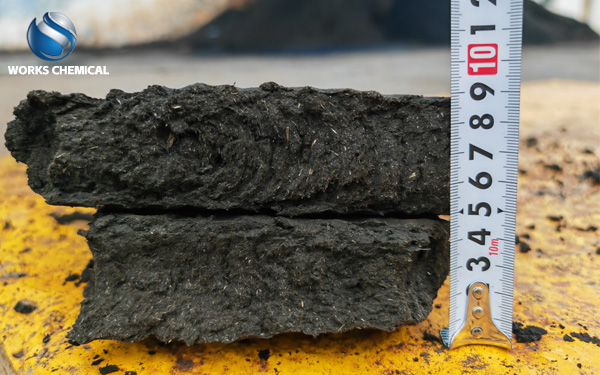
Sludge enhancers have a remarkable effect in addressing the issue of high moisture content in printing and dyeing sludge. They improve the dewatering performance of sludge through chemical and physical actions. Combined with process optimization, they can achieve efficient and economical sludge treatment. The following is a specific analysis:

The mechanism of action of sludge enhancers
Altering the surface properties of sludge particles: Sludge enhancers can adjust the charge distribution and hydrophobicity of sludge particles, promote particle aggregation and sedimentation, and reduce the content of free water. For instance, by neutralizing the charges, the electrostatic repulsive force between sludge particles is reduced, making it easier for flocs to form.
Destroying the structure of microbial cells: Sludge enhancers can destroy the cell walls of microorganisms in sludge, releasing the bound water within the cells, which is difficult to remove during conventional dewatering processes.
Optimizing sludge dewatering performance: Sludge enhancers form more stable bonds with water molecules in the sludge, reducing the freedom of water molecules and enabling more water to be separated during the dewatering process.
Practical application effect
Improving dewatering efficiency: When sludge enhancers are used in combination with mechanical dewatering equipment (such as plate and frame filter presses, belt filter presses), the dewatering cycle can be significantly shortened. For instance, after a certain sewage treatment plant adopted an enhancer, the sludge dewatering efficiency increased by more than 30%, and the dewatering time was significantly reduced.
Reducing the moisture content of sludge: Sludge enhancers can significantly reduce the moisture content of the dewatered sludge cakes. For instance, after a certain printing and dyeing wastewater treatment plant applied an enhancer, the moisture content of the sludge dropped from 80% to below 60%, meeting the requirements for subsequent disposal.
Reduce processing costs: The use of sludge enhancers can lower equipment energy consumption, the frequency of filter cloth replacement, and labor costs. For instance, a certain factory has achieved a reduction in equipment operation time through efficiency enhancers, significantly lowering electricity and labor costs.
Characteristics of Printing and Dyeing Sludge and Selection of enhancers
Characteristics of printing and dyeing sludge: Printing and dyeing sludge has a high water content, strong viscosity, and contains heavy metals and organic pollutants, making its treatment difficult. Enhancers should be selected based on their characteristics such as high viscosity and high organic matter content.
Type of enhancer: The commonly used sludge enhancer is a modified polymer product with multiple functions.
Dosage optimization: The dosage of the sludge enhancer needs to be adjusted according to the nature of the sludge (such as pH value, organic matter content) and equipment parameters (such as pressure, temperature). Excessive or insufficient dosage will affect the effect.
The synergistic effect of process optimization and efficiency enhancers
Equipment parameter adjustment: By combining the use of sludge enhancers and optimizing the pressure, temperature and time parameters of the filter press equipment, the dewatering efficiency can be further enhanced. For example, appropriately increasing the pressing pressure can promote water separation.
Simplified pretreatment steps: Sludge enhancers can reduce the need for sludge pretreatment (such as adjusting pH value and long-term stirring), simplify the process flow, and lower the operational complexity.
Environmental protection and economic benefits: The use of sludge enhancers can reduce the volume of sludge and transportation costs, while lowering pollutant emissions during incineration or landfill, meeting environmental protection requirements.
Practical application cases
A certain printing and dyeing wastewater treatment plant: By adding sludge enhancers, the sludge moisture content was reduced from 80% to 58%, the dewatering efficiency was increased by 40%, and the treatment cost was decreased by 25%.
A certain industrial park: By using sludge efficiency enhancers in combination with plate and frame filter presses, the sludge moisture content has been reduced from 85% to 65%, the frequency of filter cloth replacement has decreased by 30%, and the equipment maintenance cost has significantly decreased.